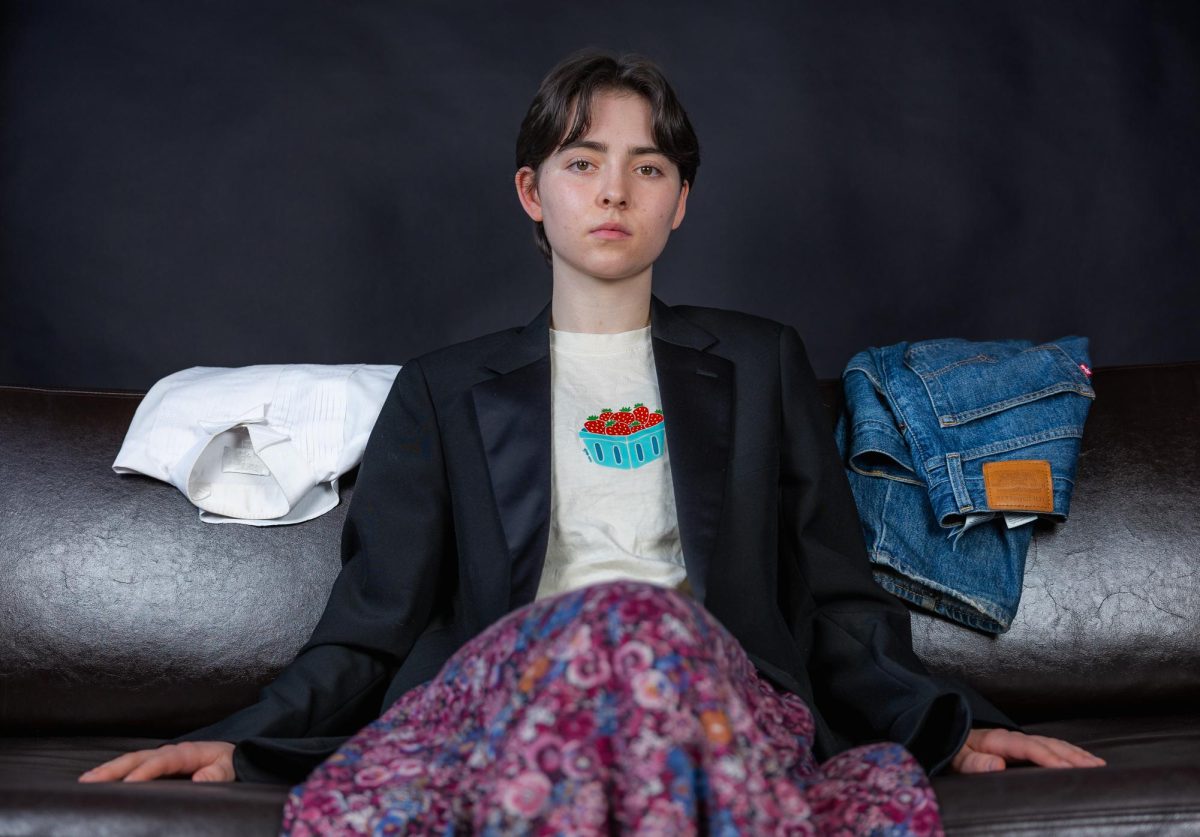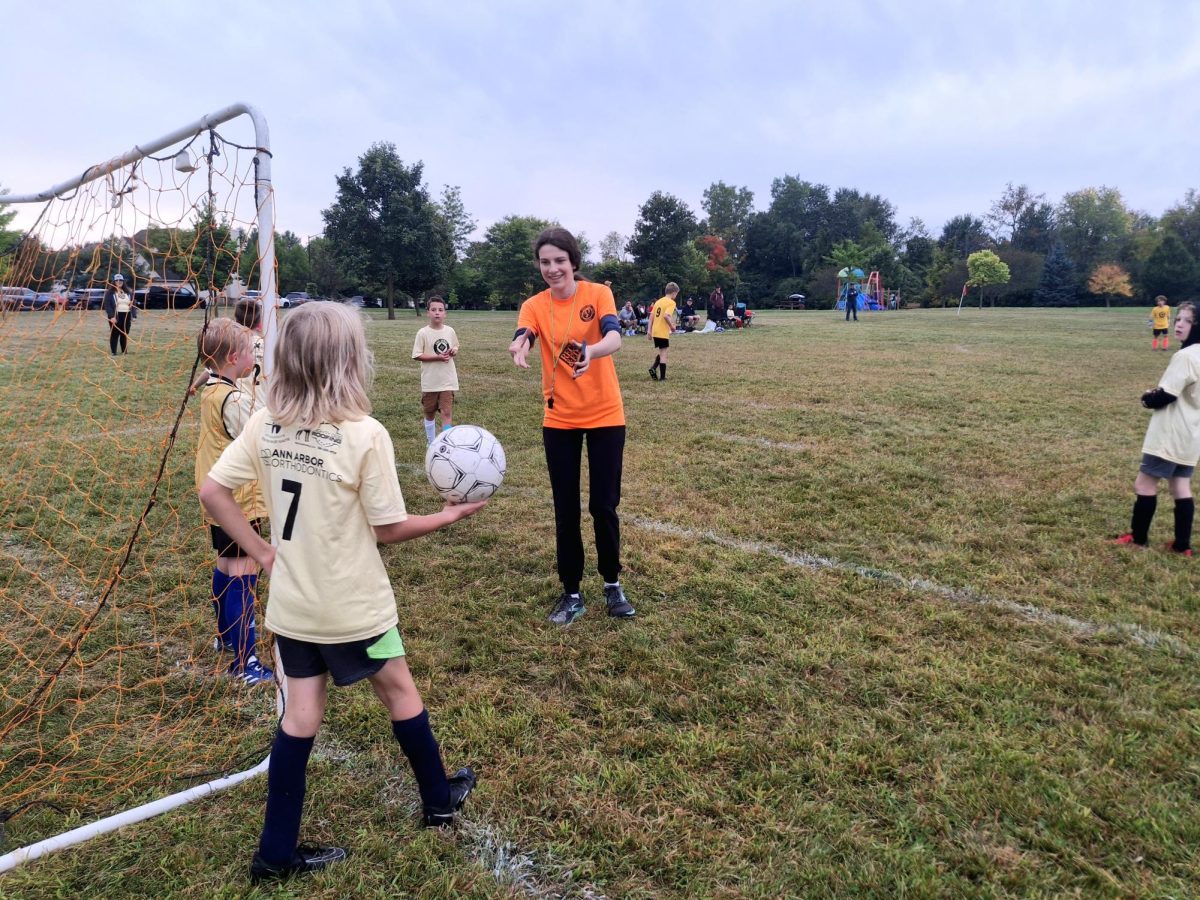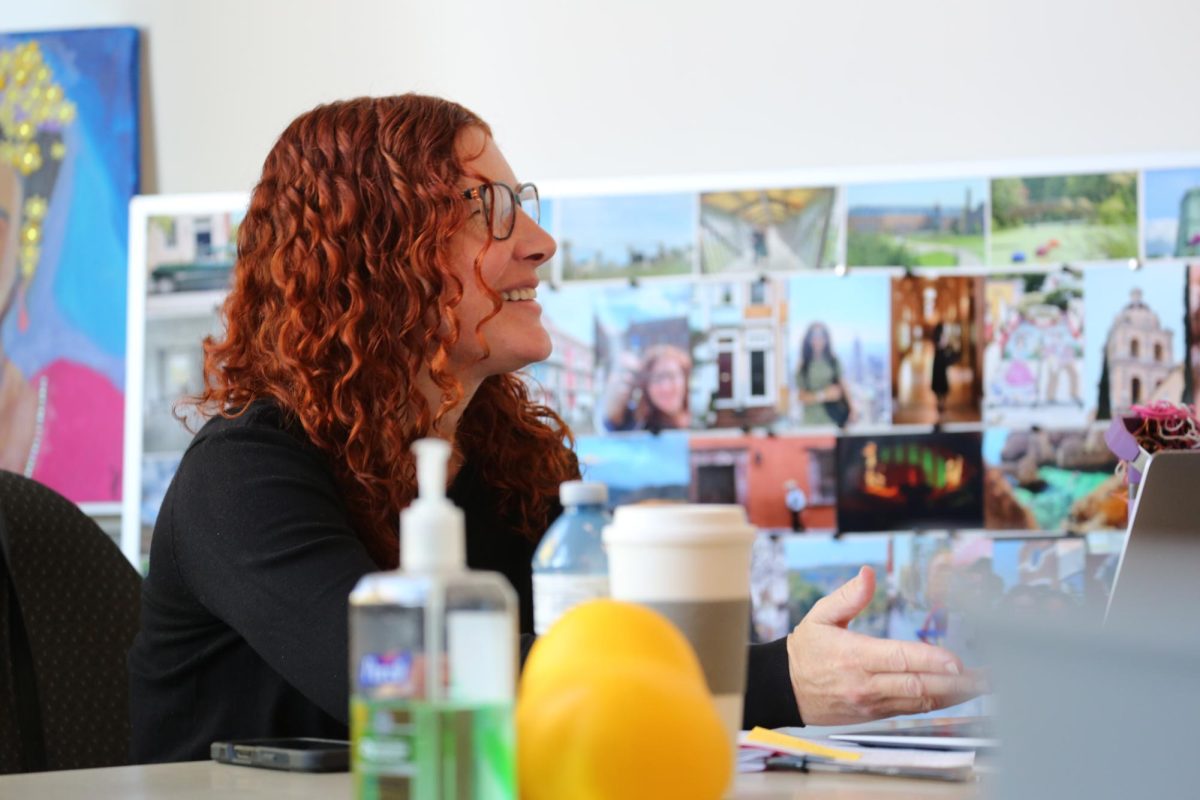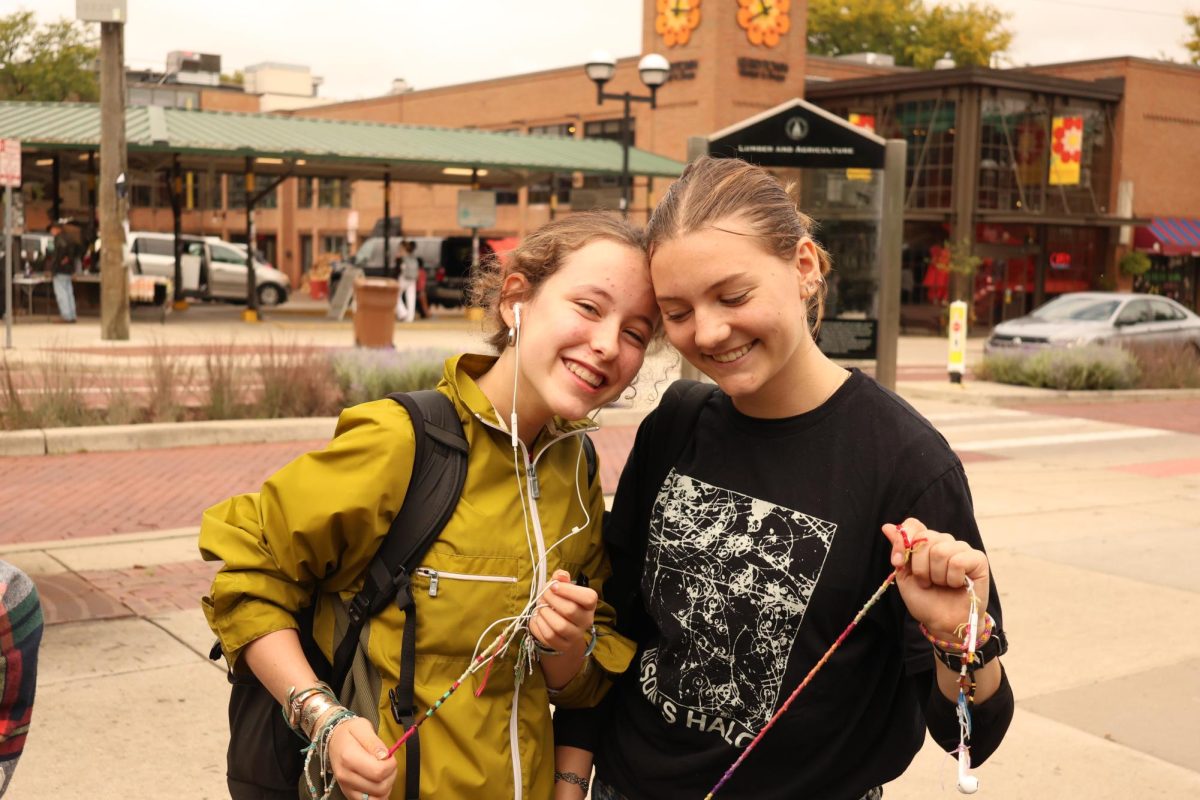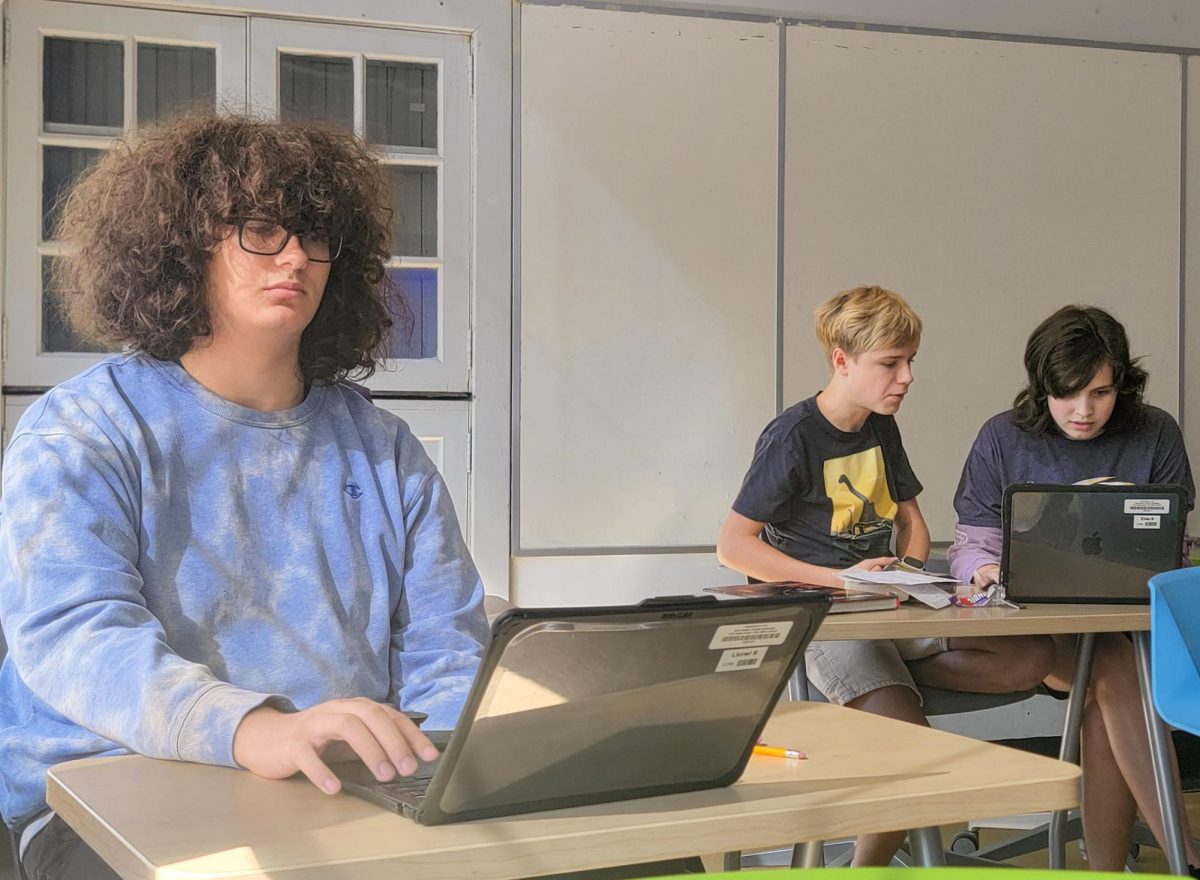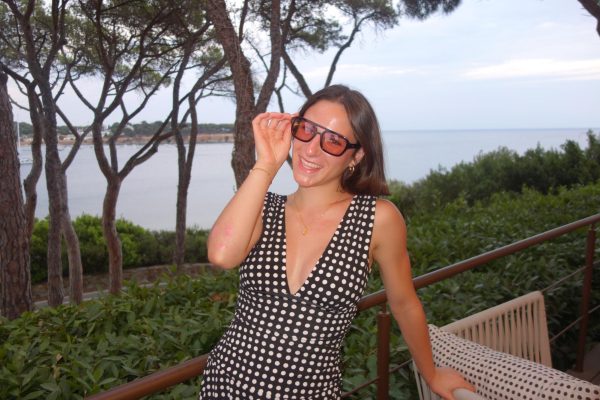With 49 pairs of unfamiliar eyes on them, Eli Braunschneider let out a breath — one they’d been holding in for years. More than 700 miles from home, they had just stepped into a new world.
This was the first time they introduced themselves to a group using they/them pronouns. This group, their new classmates, would spend the next few months farming, learning and exploring together.
For Braunschneider, The Mountain School (TMS), located in Vershire, Vermont, was where they dug into the ways in which they express their gender through clothing choices. Prior to this semester-long experience that took place the fall of their junior year, they had only ever been known by she/her pronouns.
“The summer before junior year, I was becoming more and more aware of the fact that I felt deeply uncomfortable with the public perceiving me as a girl,” Braunschneider said.
When Braunschneider’s mom proposed using they/them pronouns at The Mountain School, Braunschneider decided to take advantage of the opportunity — to be immediately recognized as a non-binary person.
Braunschneider’s parents have always been supportive. From a young age, they experimented with different modes of expression using clothing. However, there was always a sort of looming pressure of “female norms.” They never felt pressured into “being girly,” and found it odd when others expected them to conform to the specifics of gender norms.
“I never really thought of myself as a girl,” Braunschneider said. “So in some ways [changing my pronouns] was really easy. Once I did that I was like, oh now I can just be myself.”
Braunscheider was able to discuss with peers who could relate to their experiences like these through Queer Affinity, a club at TMS. They formed connections with people who understood them on a unique level. During their four months therel, Braunschneider explored their identity to its absolute depths and found that using they/them pronouns and identifying as non-binary was empowering.
“In some ways, it barely felt like a change to me,” Braunschneider said. “It just felt so natural.”
But when they returned back for Thanksgiving break, they encountered the same challenge as before in a new light: people who Braunschneider knew from home knew them exclusively as a girl. Often, well-intending people who cared about Braunschneider used the wrong pronouns or assumed they were a girl. Back in Ann Arbor, Braunschneider had to redefine their identity in a newly old context. Coming from a place where everyone knew them as who they really are, that was challenging.
“To have gotten so used to [my gender identity] then to come back and have everyday people using she/her for me, that was hard,” Braunschneider said. “I was being really misunderstood a lot of the time.”
While they understand that people simply didn’t know, the frequency at which Braunschneider was correcting the people around them was becoming incredibly exhausting; they just wanted someone else to stick up for them.
Over time, most people in Braunschneider’s life knew and respected their identity, but sometimes there were slip-ups. This doesn’t bother Braunschneider much anymore though, because they know who they are. If, in someone else’s mind, Braunschneider fits into one category or another, they are fine with that.
In finding their identity, Braunschneider discovered that what truly matters to them is that they don’t have to categorize themself. They can just be who they are and not worry about how other people see that.
Another puzzle piece of understanding their identity was finding how clothing played into their gender expression. So many gendered expectations are folded into patterns, materials and silhouettes, but experimenting with the ways in which they dress themself to find a balance between feminine and masculine presenting clothing lets Braunschneider explore their identity and fluidity of gender.
The months that followed Braunschider’s return to Ann Arbor were marked by several key shifts in the way they dressed and presented themselves in their activities, like orchestra and dance. Braunschneider immediately traded in their orchestra uniform from a dress to a tuxedo, and after that, they felt that they no longer had to constantly worry about how they looked and lived in a space of discomfort.
An even bigger shift was the one that took place in Braunschneider’s dance studio, with people they’d known for years. At first, Braunschneider continued to perform the feminine dances, but that feeling of discomfort was all too present as they started preparing for their annual spring recital. The male and female parts were distinctly different, and one day, the disconnect was too much. They decided to talk to their instructor about how they were feeling, and, in tears, Braunscheider explained the effect the extremely gendered female part was having on them. It was decided that Braunschneider would dance the male part, wearing the traditional masculine ballet uniform. To do this, they trained with the other person dancing the male part, including additional pushups and arm exercises to assist with lifts.
“To have [my instructor] so completely just take me on as, ‘This is the part you are dancing, so you are going to do the things that the boy is doing,’ was so gratifying,” Braunschneider said.
Often, they opt for masculine-presenting attire, as they feel that they have had to run away from femininity to be seen as non-binary. But Braunschneider also likes to wear the occasional floral skirt to mix the binaries.
“I think it’s ridiculous that there’s this [idea of] how a non-binary person has to dress,” Braunschneider said. “The whole point is that there’s not, and I’ve found comfort in [knowing that] I do not have to categorize myself anymore.”



